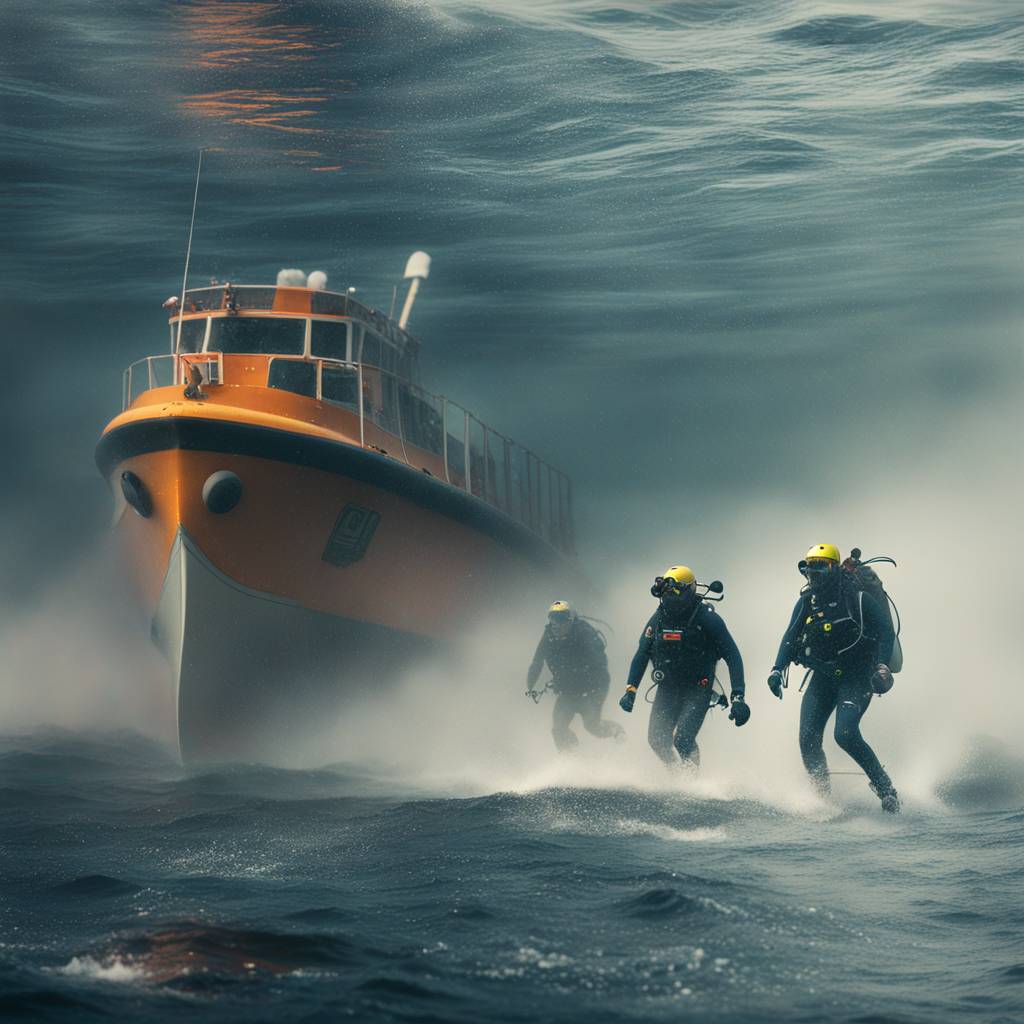Divers are using sonar technology to guide them in salvage operations following the collapse of the Francis Scott Key Bridge in Baltimore. Colonel Estee S. Pinchasin, Commander of the U.S. Army Corps of Engineers in Baltimore, stated that the “Coda Octopus” is the primary survey tool used by the divers due to poor visibility in the Patapsco River. The divers are working in darkness, relying on verbal instructions and directions from operators and vessels above the surface. They are tasked with locating and identifying connections among the debris and wreckage on the riverbed.
The U.S. Army Corps of Engineers recently posted 3D images of the wreckage online, provided by the Navy’s Naval Sea Systems Command (NAVSEA) Supervisor of Salvage and Diving (SUPSALV). The images, taken by divers with the CODA Octopus, highlight the challenges of the salvage operation. Rough weather has further complicated salvage efforts, making conditions unsafe for divers attempting to recover the bodies of the four construction workers believed to be trapped underwater in the wreckage. A floating crane named “Chessy” is assisting with the salvage efforts, with authorities believing that six members of the road construction crew perished in the collapse.
The collapse of the bridge occurred after the cargo ship Dali struck it while losing power shortly after leaving Baltimore on its way to Sri Lanka. The ship issued a mayday alert, prompting police to stop traffic but not in time to save the construction crew working on the bridge. The Dali remains stationary with its 21 crew members on board. The ship is managed by Synergy Marine Group and owned by Grace Ocean Private Ltd., both based in Singapore. Danish shipping company Maersk chartered the vessel. Synergy and Grace Ocean have filed a court petition seeking to limit their legal liability under U.S. maritime law.
The salvage operation in the aftermath of the bridge collapse has been challenging due to poor visibility and difficult conditions in the Patapsco River. Divers are relying on sonar technology and verbal instructions from operators above the surface to guide them in locating and identifying connections among the debris and wreckage on the riverbed. Rough weather has further complicated salvage efforts, making conditions unsafe for divers attempting to recover the bodies of construction workers believed to be trapped underwater. A floating crane named “Chessy” is assisting with the salvage efforts.
The collapse of the Francis Scott Key Bridge was caused by the cargo ship Dali striking it after losing power shortly after leaving Baltimore en route to Sri Lanka. The ship issued a mayday alert, which allowed police to stop traffic but not in time to save the construction crew working on the bridge. The Dali remains stationary with its crew on board, managed by Synergy Marine Group and owned by Grace Ocean Private Ltd., both based in Singapore. A court petition has been filed seeking to limit legal liability under U.S. maritime law, with a federal court in Maryland ultimately deciding responsibility and damages. Fox News Digital’s Chris Pandolfo and Louis Casiano, along with The Associated Press, contributed to the report.


